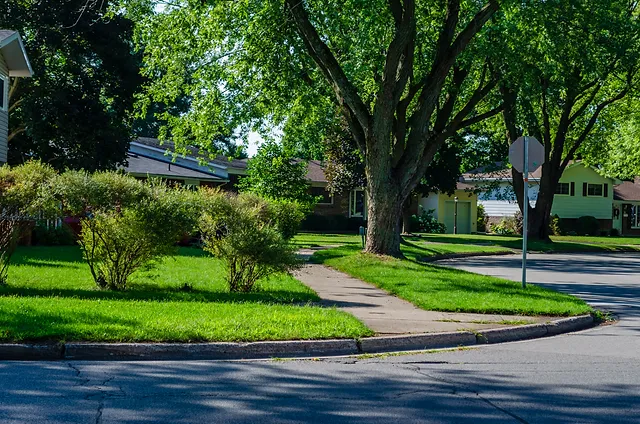Designing your home to blend with its natural surroundings is fashionable and sustainable. It promotes coherence and visual harmony, making a built environment feel like an intrinsic element of the immediate landscape.
Drawing design inspiration from nature nurtures a mindset valuing environmentally sound material sourcing, energy efficiency, water self-sufficiency, weather resistance and climate resilience.
Supply importation, air conditioning, insulated multi-pane windows, smart locks and other modern conveniences influence homebuilding today.
In the past, construction professionals had to determine how to design residences that made sense for their natural environments to achieve beauty, comfort, safety and privacy. Consider these four factors to think old-school and design your home to coexist effortlessly with the outside world.
Topography

The distinct features of the land your house sits on should dictate design choices. The Basketmakers in New Mexico thought this way when they built semi-underground pit houses to keep them cool in the summer and warm in the winter. The Ancestral Puebloans who succeeded them built homes with readily available masonry within the bottom of cliffs to leverage the canyon wall for support.
When designing a practical home, use your resourcefulness to think outside the box and turn seemingly topographical obstacles into assets. Adopting the surroundings’ colors, contours and textures can visually merge your house into the landscape.
Body of Water
Regardless of salinity, bodies of water are detrimental to your home’s structural integrity — but who said anything about submerging your residence?
Humans have been living on water for centuries. The surviving alpine pile dwellings prove lakes, rivers and wetlands were prime real estate during the Neolithic and Bronze Age. Planting wooden poles deep into the water-saturated ground is more sensible and sustainable than excavating and pouring concrete in such an environment.
Stilts can be helpful when you build on dry, even land instead of over water. They can elevate your house’s resistance to coastal flooding, allowing your home to stay unscathed whenever the sea encroaches on your property.
Constructing a bridge over a nearby river enables you to add a structure to the other bank you can safely cross whenever you please. This doubles your square footage and converts the potentially hazardous body of water into a focal point.
If you can access spring water, harnessing it is a low-hanging fruit. Let it flow throughout your house instead of incorporating it into your plumbing system. This water feature brings nature in and makes your home one with it.
Climate
Understanding where the sun is and how much you can get at various times of the year matters. Its path is a useful guide to determining the optimal home orientation to increase daylighting and reduce or increase heat gain, passively regulating your home’s indoor climate.
For example, the Wallingford Passive Solar House in Nether Providence Township, Pennsylvania, looks like a sweeping greenhouse with its heavy use of triple-pane windows that let you track the sun’s movement throughout the day.
450 Warren penthouses in New York City have floor-to-ceiling glass walls that illuminate all corners of the interior and frame impressive views of downtown Brooklyn. These invisible barriers create an impression of dynamic decor as the borough aesthetically transforms when the trees turn with rich autumn colors, pristine winter white, vibrant spring hues and bright summer tones.
The Crescent H Residence in Wilson, Wyoming, is also a sun-kissed embodiment of a blended space with sun direction in mind. Its expansive roof stretches from east to west, blessing living spaces with abundant sunlight while taking panoramic snaps of the Grand Teton.
Moreover, note the prevailing winds. They’re predictable, so knowing which direction they blow in which months can help you boost natural ventilation to maximize comfort while minimizing energy use.
Vegetation

Native trees, shrubs and perennials have numerous practical benefits — shade, cooling, air pollution mitigation and flood control. They also require less maintenance and increase your home’s curb appeal and value.
More importantly, wild vegetation promotes biodiversity by attracting and sustaining wildlife. Animals, including what gardeners consider pests, play distinct, vital roles in the ecosystem.
The absence of one can cause severe ecological imbalance and a pronounced ripple effect on human and pet food security. Lush yards can provide endangered species shelter and support their prey populations, helping them recover in the wild.
Pollinator habitats are invaluable in agriculture. More than 80% of all flowering plants worldwide reproduce through the aid of pollinators. Most of the crops humans and pets consume come from flowering plants. Everybody wins when there are more bees, butterflies and birds.
Make creative home design decisions to leave the surrounding vegetation untouched as much as possible. Allow towering trunks and stretched-out limbs to jut out of roof overhangs. Conventional wisdom says they’re hazards, but you can offset their dangers using durable and moisture-resistant roofing products, like clay tiles.
Marry Architecture and Nature
Blending your home’s design with the natural surroundings can be challenging due to legal restrictions and cost. Although taking this route can cause additional headaches, the benefits you’ll enjoy make swimming upstream worth the trouble.











